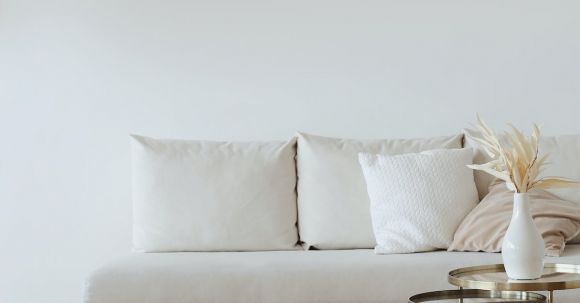When it comes to interior design, choosing the right color palette is crucial. The colors you select can greatly impact the overall look and feel of a space. Whether you’re redecorating your home or designing a new one, here are some tips to help you choose the perfect color palette.
Understanding Color Theory
Before diving into color selection, it’s important to understand the basics of color theory. Colors can be categorized into warm, cool, and neutral tones. Warm colors like red, orange, and yellow evoke feelings of energy and comfort. Cool colors like blue, green, and purple create a calming and soothing atmosphere. Neutral colors like white, gray, and beige provide a versatile backdrop for other colors to shine.
Consider the Mood
When deciding on a color palette, consider the mood you want to create in each room. For example, if you want a serene and relaxing bedroom, opt for cool, soft hues like light blue or lavender. On the other hand, if you’re designing a lively and energetic living room, warm tones like red or orange can be great choices. By aligning the colors with the desired mood, you can create a harmonious and inviting space.
Start with a Focal Point
A focal point is a key element in a room that draws attention and becomes the center of interest. It could be a piece of furniture, artwork, or even an architectural feature. Use the colors from the focal point to guide your color palette. For example, if you have a vibrant painting with shades of yellow and blue, you can incorporate these colors into the rest of the room. This ensures a cohesive and visually appealing design.
Consider the Lighting
Lighting plays a significant role in how colors appear in a space. Natural light and artificial lighting can affect the way colors are perceived. Before finalizing your color palette, consider the lighting conditions of each room. If a room lacks natural light, using lighter colors can help brighten the space. On the other hand, if a room receives ample natural light, you can experiment with bolder and darker hues.
Create Contrast and Balance
To create visual interest and prevent a room from feeling flat, it’s important to incorporate contrast and balance into your color palette. Contrast can be achieved by pairing complementary colors, which are opposite each other on the color wheel. For example, blue and orange or red and green. Balance, on the other hand, involves distributing colors proportionally throughout the space. You can achieve balance by using a dominant color, a secondary color, and an accent color in the right proportions.
Consider the Existing Elements
When choosing a color palette, it’s essential to consider the existing elements in the room. Take into account the color of the flooring, furniture, and fixtures. You want the colors you choose to complement and enhance the existing elements, rather than clash with them. If you have a wooden floor with warm undertones, for example, you might want to choose a color palette that complements the warm tones.
Test Before Committing
Lastly, before committing to a color palette, it’s a good idea to test the colors in the actual space. Paint small swatches of the colors you’re considering on the walls and observe how they look in different lighting conditions throughout the day. This will give you a better sense of how the colors will appear and help you make an informed decision.
In conclusion, choosing the perfect color palette for your interior design requires careful consideration. By understanding color theory, considering the mood you want to create, starting with a focal point, and taking into account lighting and existing elements, you can create a harmonious and visually pleasing space. Remember to create contrast and balance, and always test the colors before committing. With these tips, you’ll be well on your way to designing a space that reflects your personal style and enhances your daily living.





